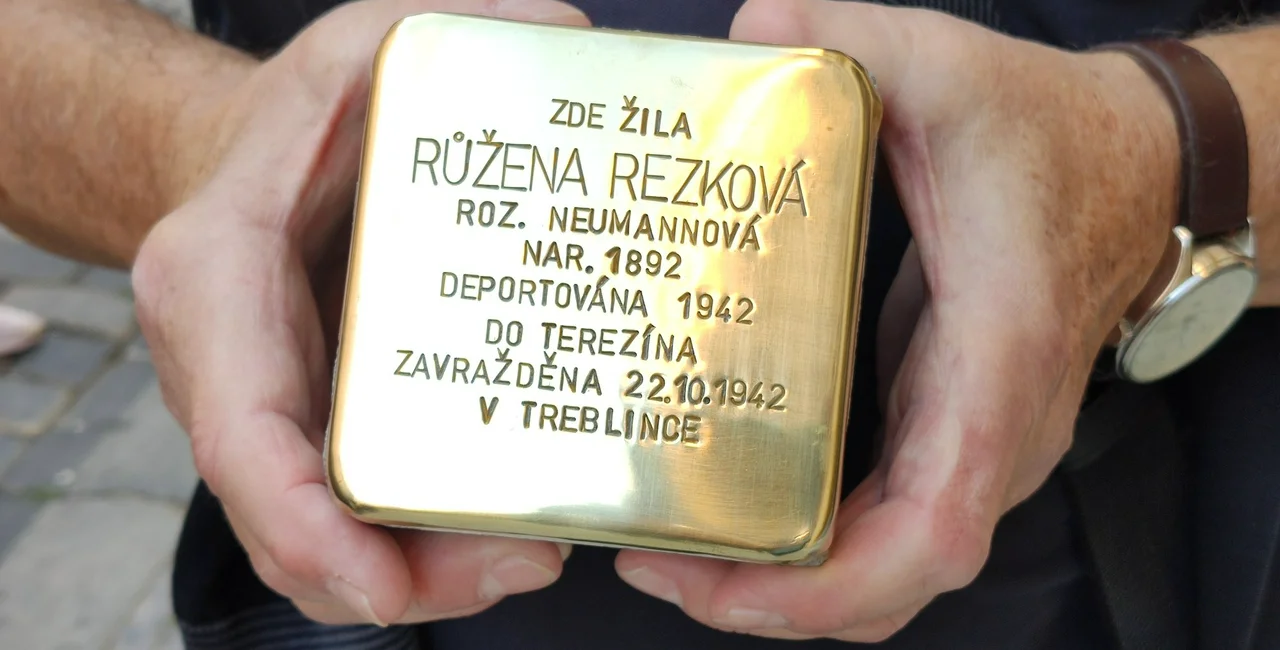You may have noticed brass stones with inscriptions in Prague’s sidewalks in front of some buildings. Recently, 24 more Stolpersteins have been placed in Prague — eight on September 3 and 16 more on September 4.
The name literally means “stumbling stones,” while the Czech name “kameny zmizelých” means stones of the disappeared. They are they are meant to recall victims of the Holocaust and the Nazi occupation during World War II, who did not return home. There are now 396 stones across the city. Some social media posts put the number at 400, but that was due to a miscount.
“The stones with data of the deceased are laid in the pavement in front of the victims’ residence,” František Bányai, chairman of the Publicly Beneficial Association Supporting Persons Affected by the Holocaust (VPPODH), said. The association oversees the Stolperstein project in the Czech Republic.
He added that Stolpersteins could be for any victim of Nazi regime, mainly Jews, but also Roma, political enemies, or members of the LGBT community.
Esch stone is a reminder of an entire life that was lost.
Stones on Lazarská Street 10/4 are for the Prager family, who lived and worked there. Karel Prager, the father of the family, was born in 1888 near Pardubice as the second oldest of a total of eight children. Of the eight siblings, only his brother Jan and sister Vlasta survived the Holocaust.
Karel Prager began his own law practice in 1927 and married Ida Götzl a year later. They soon had two children. The daughter, Evelína was sent to London in 1939, but the brother was unable to follow. The parents and the brother were sent to Terezín in 1942 and a year later to Auschwitz, where they were killed. Evelína is still alive but was too frail to come to Prague.
Two stones were laid in Klimentská Street in Prague 1 to commemorate the Beck family. Margit Becková and her husband Jiří Beck taught music to children from socially disadvantaged families. They worked as volunteers at a shelter for the poor. The couple also supported poor families financially. The Becks were taken on October 26, 1941, to the Łódž Ghetto and were murdered in Chelmno (Kulmhof) in what is now Poland.
In Prague 2, District Mayor Jana Černochová helped to place the stones. The district got 12 new stones on Blanická, Slezská, Londýnská, Záhřebská, a Jana Masaryka streets.
“The ones we put in the sidewalk in Blanická Street are to remind people of three women who lived here. Women who were deported to concentration camps from which they never returned. They bear the names of Růžena Jelínková, Emilie Jelínková and Jiřina Zorinová,” she said.
Three stones for town clerk Otto Kolben, his wife Zdeňka and son Ludvík, who were deported in 1942, were placed in front of their residence in Jana Masaryka Street.
The stones are not solid brass. There is a thin plaque of metal mounted on top of a concrete base. They are made exclusively by artist Gunter Demnig, who began the project in Cologne, Germany, in 1992. By the end of 2019, there were 75,000 stones across Europe. The first stones were placed in the Czech Republic in Prague’s Josefov district in 2008. Aside from Prague, they can be found in Brno, Olomouc, and Ostrava plus some smaller towns.
Family members of the deceased and historians can contact the VPPODH with a request for placing a stone. The association currently is taking applications for 2023. Only 50 stones can be laid in Prague annually, as the number is limited due to how many can be produced to meet the demand across Europe.
More information including a map and stories of the individual people can be found in English on Facebook.












 Reading time: 3 minutes
Reading time: 3 minutes 


























